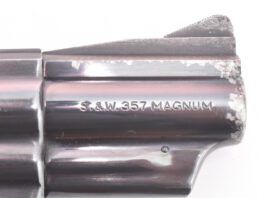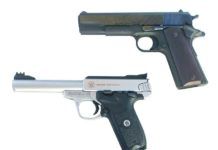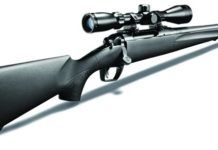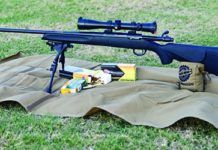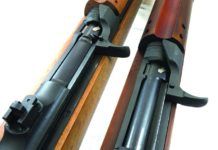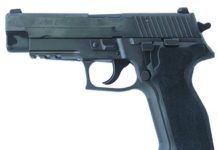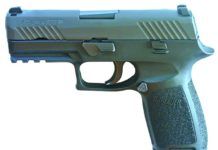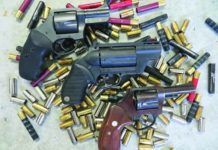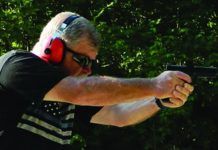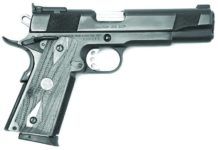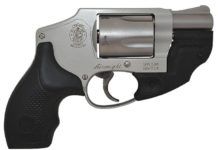Buying Self-Defense Insurance: Important Factors to Consider
As an attorney (and, for full disclosure, someone who was formerly an independent program attorney for Texas Law Shield), it is abundantly clear that the legal system puts self-defense shooters in a bad spot. It is costly, time consuming, slow, and worst of all, the legal system decides whether you keep your freedom after you have defended yourself. To make matters worse, this system is, from what I've seen, biased against gun owners. From my own experience, many law-enforcement officers, district attorneys, and even jurors seem to think that if you own or carry a firearm, you are inherently guilty in some way. They believe that even though you were actually carrying your lawfully owned firearm, you were really looking for trouble, you wanted an excuse to shoot someone, or similar mental fictions. I've honestly lost track of the number of times a gun owner was arrested after a lawful incident of self-defense. Accordingly, due to the nature of our legal system, individuals are purchasing legal protection in case they have to defend themselves.
American-Made 9mms: Ruger, Springfield, and Honor Defense
When it comes to 9mm carry pistols, there are several characteristics that immediately come to mind. Polymer frame, striker fired, wide grips, and high capacity. Recently we found three, or should we say three and a half pistols, that didn't quite fit that description.
The first was Ruger's $579 American Compact model 8633 that featured thumb-operated safeties on both sides.
Next were products from Honor Defense, one of the newer makers on the market. The $499 Honor Guard HG9CLE is a single-stack double-action-only pistol. The LE suffix stands for law enforcement. This gun was a variation on the original Honor Defense pistol, but it lacks a Picatinny accessory rail to favor inside-the-waistband carry for undercover work. Our 3.8-inch-long-barreled Compact LE pistol arrived with a second top end ($250, sold separately) that housed a 3.2-inch-long barrel. The shared receiver boasted unique grip contours, and both top ends utilized the same guide rod and recoil spring.
Third was the $1220 Springfield Armory 1911 EMP 4-inch Conceal Carry Contour pistol, which arrived with three 9-round magazines. The EMP operates with a single-action trigger, and this might have been our first test wherein a single-stack 1911 pistol packed more rounds than its polymer-framed competitors. Its descriptive name referred to the gun's backstrap, which has been sliced diagonally, making the rear of the grip about of an inch shorter than if it were continued in a straight line to the heel of the magazine well. This made the pistol more concealable, specifically when holstered with a butt forward (or muzzle back) cant.
Our test sessions began and ended on the reactive targets located on Steel Alley at American Shooting Centers in Houston. Accuracy data was collected from a distance of 15 yards with the guns supported by a Caldwell Matrix rest. Our choice of test ammunition consisted of Browning's new 147-grain BXP X-point jacketed hollowpoints and three different rounds from Black Hills Ammunition of Rapid City, South Dakota. They were the 115-grain JHP EXPs that were designed for maximum performance in guns not rated for +P ammunition, a 124-grain JHP +P choice, and a new subsonic round, the 125-grain non-expanding HoneyBadger ammunition. We tracked the velocity of each combination using an Oehler 35P (printing) chronograph.
All three guns were recent releases, so we really didn't know what to expect. As always our goal was to reveal reliability and accuracy as well as handling characteristics. Would we find versatility or would the accuracy of each gun be limited to a single bullet weight? Our job was to deliver to point of aim every time we pulled the trigger. Would any of these guns make that job easier than the others? Here is what we learned.
22-Caliber Handgun Shoot-Out: Smith, TacSol, Beretta, Colt
In this installment, we are looking at some of the best 22-caliber pistols for all-around target shooting and training for marksmanship and personal-defense practice, with an emphasis on viability for personal-defense training. Some handguns are just fine for general plinking, but the modern shooter demands the ability to train with combat lights or even a red-dot sight. All 22s do not allow this type of versatility. Let's look at four 22-caliber handguns and see how they stack up as modern trainers.
The 22 self-loading handgun is a great firearm that every handgunner should own at least one of. The 22 is a great trainer, and it is also a good small-game handgun, and it is even useful in some forms of competition. The absence of recoil and muzzle report compared to centerfire handguns is often touted, but recoil and muzzle blast are there, simply in easily manageable portions. The shooter is free to concentrate on trigger press, sight picture, sight alignment, and grip. Practice in offhand fire, combat practice, firing for extreme accuracy from a solid rest, clearing malfunctions and hunting game are just some of the practice that may be accomplished with the 22 pistol. For small-game hunting, excellent accuracy is demanded. For combat practice—and this is an important point—the handgun should be similar to the centerfire defense gun in accuracy. In that manner, the shooter isn't given a false sense of security by a 22 that is much more accurate than the 9mm or 45 they use for personal defense. When practicing with the 22, the serious shooter should use the same grip and trigger press that he or she uses when mastering the 9mm or 45. Using a lighter grip or shooting fast just because the 22 is so controllable doesn't cross over into personal defense skills; it is simply shooting for fun.
We collected two 22-caliber handguns and two 22-caliber conversion units for comparison. One of the handguns is a new model and the other, a relatively new and often overlooked pistol. The firearms tested included the Smith & Wesson Victory 22, Beretta Neos 22, Tactical Solutions' Glock conversion unit, and a Colt 22 Ace conversion unit.
308 Winchester Bolt-Actions: Remingtons M783 Rifle Wins
Among the most useful, versatile, and powerful all-round sporting rifles is the 308 Winchester bolt action. These rifles are accurate, reliable, and can take on small to big game in many hunting conditions. When married with a good optic and in competent hands, they are well suited to take a 200-pound target at 200 yards and beyond, as a rule of thumb. The chambering is a joy to use and fire, compared to hard-kicking magnums, and offers plenty of recreational value. The bolt-action 308 is also a useful tactical rifle in many situations, and the round is widely used by law enforcement across the country.
We recently took a hard look at four bolt-action rifles chambered in 308 Winchester, with a special emphasis on looking for affordable options. So we chose two used rifles and one lower-cost new rifle and compared them to a rifle in a higher price range to ensure we weren't missing something that more dollars could provide. These rifles included the now-discontinued Mossberg ATR, the Remington 783, the Remington 700 SPS, and the Savage Axis. In this quartet, we shot three loads for accuracy testing and another load in offhand fire to gauge the accuracy of the rifles. As it turns out, the economy combination rifle that comes from the factory with a bore-sighted scope is a good deal. Though the Remington 783 was the most accurate rifle, we also liked the Remington 700 SPS a lot. Overall, however, the Savage Axis combination seems a best buy. Let's look hard at these rifles and delve into why we made these choices and to see if you agree with our assessments.
Mid-Caliber Bolt-Action Rifles From T-C, Browning, and CZ USA
Recently, we assembled a panel and arrived at what could be described as a list of practical considerations for choosing an all-around rifle. Not a specialty piece, mind you, but a "daily driver," so to speak. Our test team came up with three considerations we wanted: power, accuracy, and portability. We agreed that in terms of power, we'd like to be able to hunt at least some deer-sized animals, but not with so much power that the rifle was too heavy to carry or generate so much recoil that it was unpleasant to shoot. To us, this meant short-action calibers greater than 223 Remington but less than 308 Winchester. In terms of accuracy, it wasn't long ago that producing a 1-inch group at 100 yards (1 minute of angle) was a high standard. Certainly 1 MOA is still a benchmark, but recent state-of-the-art machinery has made it possible to buy such guns over the counter. And last, but certainly not least, there's portability. Today, that is just as likely to mean aboard an ATV as it is over the shoulder. Either way, slender and compact is still the desired profile. Thus, the focus of this test became four bolt-fed short-action rifles in medium or midrange cartridges. The lineup was as follows:
We had intended to keep the maximum length of our rifles to less than 40 inches, but we decided to include the 41.5-inch-long Thompson Center Compass because we were eager to find out if this $399 rifle chambered for 22-250 Remington had recovered since its sudden recall for safety issues. Adding to its appeal was its threaded barrel, ready for a suppressor or muzzle brake.
Our shortest rifle was also chambered for 22-250. The $859 Browning X-Bolt Micro Midas offered a Grade 1 satin-finish walnut stock with 12.5-inch length of pull and about one additional inch of stock spacers. The Micro also weighed the least, as little as 6.1 pounds unloaded.
In the middle we chose the newest model 557 from CZ USA. The Sporter Short Action chambered for 243 Winchester was perhaps the most traditional rifle, with a checkered walnut stock.
The least traditional rifle, at least in terms of appearance, was the Howa Mini Action rifle from Legacy Sports International. Its multi-cam finish, 6.5 Grendel chambering, and 10-round detachable box magazine set it apart from the others. The right size overall, we hoped the big magazine sticking out the bottom would not make the Howa too difficult to pack.
Reproduction M1 Carbines: We Test Auto-Ordnance and Inland Manufacturing Models
The M1 Carbine was adopted during World War II, then proceeded to arm our soldiers during the Korean War and Vietnam War, making it one of the most widely produced of all U.S. Military rifles. Millions were produced, and at one time, surplus models were quite common and inexpensive. Try finding a vintage M1 Carbine today, and you will pay close to $1000 for a well-used specimen. Costs, however, will vary dramatically depending on which manufacturer produced the M1 Carbine, the model, features, and condition.
We opted to test two new M1 Carbine reproductions, the M1 1945 Carbine from Inland Mfg. (not the original Inland Mfg. but a new company) and the M1 Carbine Paratrooper from Auto-Ordnance (A-O).
We looked at these two Carbines for historical accuracy, for competition use in M1 Carbine Matches, and as a home-defense choice. In our opinion, the Inland is suitable for all three, where the A-O is not competition ready, but it satisfies the other two roles pretty well. Bottom line, our test team found these two carbines to be reliable, depending on the ammunition employed, offer good performance if the cartridge is used within its limits, and unlike some other M1 Carbines our testers have fired in the past, these two reproductions are accurate enough for nearly any use.
2016 Guns & Gear Top Picks
Toward the end of each year, I survey the work R.K. Campbell, Roger Eckstine, Austin Miller, Robert Sadowski, David Tannahill, Tracey Taylor, John Taylor, Rafael Urista, and Ralph Winingham have done in Gun Tests, with an eye toward selecting guns, accessories, and ammunition the magazine's testers have endorsed. From these evaluations I pick the best from a full year's worth of tests and distill recommendations for readers, who often use them as shopping guides. These choices are a mixture of our original tests and other information I've compiled during the year. After we roll high-rated test products into long-term testing, I keep tabs on how those guns do, and if the firearms and accessories continue performing well, then I have confidence including them in this wrap-up.
Bigger 9mms Handguns: SIG, Arsenal, and Beretta Go At It
As noted earlier in this issue, 9mm auto-loading pistols are among the most commonly purchased firearms in America for pleasure, competition, and defense. These guns are offered in many styles and price points, ranging from a few hundred to several thousands of dollars. While the handguns in this comparison are not top-end, highly customized pistols costing thousands of dollars, they are generally marketed as being well above average quality in fit, features, and capabilities.
In this comparison, we test five pistols, three of which were built by SIG Sauer, one by Beretta, and one newcomer from Arsenal. The SIGs tested are the classic P210, the P226 MK25 used by the U.S. Navy SEALS, and the relatively new P320. The Beretta tested is the recently updated M9A3. The fifth gun is the new Strike One from Arsenal.
For our evaluation, we used three different 9mm loads from three different manufacturers in two different weights and two different bullet styles. As always, the guns in question were shot by multiple testers (this time three men and three women) of different backgrounds.
We did our accuracy testing at Boyert Shooting Centers, an indoor range in Houston, and followed the standard accuracy protocol of collecting five 5-round groups at 25 yards from a rest for each pistol/ammunition combination. For this test, we also performed a speed drill. The speed drill involved starting from a low-ready position, shooting twice to the chest and once to the head of a silhouette paper target. This test was performed at 7 yards by one experienced tester with large hands. The speed test was performed after the familiarization shooting, but before the accuracy testing. The tester was given only one opportunity to perform the test. As these pistols are supposed to be superior to the average offering, our team expected above-average results and graded accordingly. Though all five pistols turned in good results and had their fans, the testing yielded one clear surprise winner.
Big-Bore Snubnoses Around $500: Charter Arms and Taurus
We recently reviewed three 38 Special revolvers that cost about $400 and thought we would increase our budget and caliber size, and then sourced three revolvers each costing about $500 in three different big-bore calibers: 44 Special, 45 ACP, and 45 Colt, often called 45 Long Colt (LC) to ensure it's not mixed up with the Auto Colt cartridge. The three revolvers included two Charter Arms products, the Classic Bulldog in 44 Special and the newer Pitbull in 45 ACP, plus the Taurus Public Defender Polymer chambered in .410 shotshell and 45 LC.
Even though these were new revolvers, we still performed a range-rod test since there was a bit of side-to-side wiggle in the cylinders of all the revolvers. Range rods check the alignment of the chambers to the barrel bore. We also noted that the action of the Taurus seemed a bit stiff; our initial dry firing in double action found the cylinder would not fully index to the next chamber at times. Dry firing took care of the indexing issue, and all passed the range rod test. We also noted during the range-rod test the barrel of the Pitbull was not fully screwed into the frame. It was off by a fraction of a turn, enough to cock the front sight to the left when aiming the revolver. It is unacceptable that a gun leaves the factory in this condition. We anticipated and needed to use Kentucky windage with the Pitbull at the range.
In the past Charter Arms revolvers have been favorably rated, but in these two examples we found exception. The not-fully-screwed-down barrel was also the reason the cylinder-to-barrel gap was so large. We measured the gap between the front of the cylinder and the forcing cone at the rear of the barrel using feeler gauges from Brownells (606-950-252WB) and found a gap of 0.010 inches for the Pitbull and the Bulldog Classic and the Taurus at 0.005 inch. A gap of 0.003 inches is desirable for a competition revolver, but up to 0.006 inches is often found. A large gap allows more gas to escape, reducing the bullet's velocity. It also means there is more flash, and if the chamber and cylinder are not perfectly aligned, a user might experience splash from burning powders and bits of shaved bullet metal. We did not experience any splash with the Charter Arms revolvers. We did note that the Classic Bulldog had about 30 fps more than the published data for Hornady Critical Defense165-grain FTX bullet, which is 900 fps out of 2.5-inch barrel. The 3-inch barrel of Bulldog must have helped increase velocity. The Pitbull had noticeably less muzzle velocity compared to factory data. We assumed the reduction came because the Pitbull has a 2.5-inch barrel and the factory data for the cartridges use either a 4- or 5-inch barrel. Reduced muzzle velocity also occurred in the Taurus.
A common feature of all three revolvers was a safety transfer bar. This system prevents the hammer from striking the firing pin unless the trigger is pulled fully to the rear.
These revolvers are made for close-in work, but we still tested accuracy out to 25 yards. Since the Taurus offers the ability to fire .410 shotshells as well as cartridges, we sourced some CCI shot cartridges in 44 Special. CCI manufactures shotshells in 45 ACP, but warns against using the the cartridges in revolvers since the crimp that holds the shot in the cartridge case may interfere with the rotation of cylinder after being fired. One of our team members regularly carries a revolver loaded with bird shot cartridges and bullet cartridges when we walks his dog in the woods. He's equipped to deal with snakes as well as bears, depending on what chamber he lets fly.
Glock Night Sights: We Test Glow-in-the-Dark Aiming Aids
As a carry handgun, the Glock is rugged, reliable, and combat worthy. About the only modifications that actually improve the Glock are the addition of a better trigger and a set of aftermarket sights. We dealt extensively with the issue of trigger replacements in the April 2014. There, we installed a Zev Technologies' GlockWorx Ultimate kit from Brownells.com ($250, #100-006-566WB, Mfr. Part: ZTFULULT4G9BLK) into our Glock 17. We gave the Ultimate Kit an A grade, saying it "was the upgrade that produced the biggest difference in performance all by itself, increasing the accuracy of the Glock 17 from an average grouping of 2.3 inches down to 1.6 inches."
Also in the April 2014 issue, we looked at two sight-upgrade kits, both from Brownells. One was the Brownells Glock 17 Sight Upgrade Kit ($200, #080-000-919WB), which included a Meprolight (Kimber) ML-10224 Tru-Dot Night Sight System for Glock 17, 19, 22, 23, 31, 32, 33, 34, 35, 37, 38, 39; an MGW Glock Sight Adjustment Tool, and an Ed Brown Front Sight Tool for Glock. Since we had the installation tools handy, we also ordered a set of TruGlo tritium fiber-optic Brite-Sites ($90, #902-000-107WB, Mfr. Part: TG131GT1Y), yellow rear and green front. We chose to put the TruGlo sights on the Glock 17 and the Tru-Dots on a G34 so that we could shoot them side by side.
With the Ed Brown Front Sight Tool for Glock ($20 sold separately, #087-017-001WB, Mfr. Part: 952) and the MGW Glock Sight Mover ($100 sold separately, #584-045-017WB, Mfr. Part: MGW309) for the rear sight, we started the switch with a disassembly of the slide to get access to the front sight. With the Ed Brown front sight tool and a small crescent wrench, we loosened the screw beneath the sight and removed it, then replaced the white dot with the new TruGlo front sight and tightened with the crescent wrench. Once the front sight was swapped, we hooked the slide into the MGW. The device came with some thin plates to raise the slide up the right height. We did not need them. The old sight drifted out with relative ease, going left to right pointed away from us. The new rear TruGlo sight did require some minor fitting with a file and a little more strength to slide in, but with the MGW tool, leverage was not a problem. We used the same process to put the Meprolite sights onto a factory Glock 34.
Despite the new TruGlo sights being fixed like the originals, we found them to be much clearer and easier to acquire and reacquire targets. We took to the range with the TruGlo sights installed, using all other original parts, and we cut our average group size down by almost half an inch, from 2.3 inches with the standard Glock to 1.9 inches with the TruGlo sights. We turned down the lights over the shooters, leaving the targets illuminated to check out how much the tritium would glow in the fiber-optic sights. The green front sight was quite bright, while the rear yellow sights were significantly dimmer, although still visible.
The Meprolight Tru-Dots provided an even more impressive change on the G34. We shaved just over a full inch off our average group size at 10 yards once we installed them.
Upgrading fixed sights can seem like a challenge to someone who hasn't done work on pistols previously, but with these tools and the simplicity of Glock's designs, this upgrade is a great place to start if you want to attempt a DIY project. You can drift the sights out with a punch, which will save $100 for the MGW tool, but you risk rupturing the tritium capsules. The MGW mover requires oil on the crankshaft, but it made drifting the dovetail sights in and out so easy we quickly misplaced our punch set. Overall, we found the TruGlo sights to be a nice upgrade and would recommend putting them in place of the standard non-tritium sights on any factory Glock. We gave them a Grade: A ranking, along with the Meprolight Tru-Dot tritium.
Naturally, readers asked about other sights, so we began looking at more replacements we could test head to head, rather than as a general Glock upgrade. So, again working with Brownells, we assembled a sextet of night sights suitable for installation on various Glocks. Also, we believe you can broaden our recommendations to include other firearms of similar size — the visual presentation won't be appreciably different on different platforms — though the installation process may differ gun to gun.
More Laments for Custom Guns
Like Grant said in last month's letters section, I, too, lament the passing of the pride of custom-gun ownership and the common look of the Ubiquitous Black Gun. But, as was said, black guns are cheap and proven reliable. Also, I cannot justify carrying a nice custom pistol on the off chance that I might have to use it. In that case, I would have to surrender it to the police, and then it would be months at a minimum to maybe get it back by jumping through their hoops.
Yes, I would rather carry a "Rolex"-quality sidearm, but I often think that if I had to give up my Valtro, I'd don't know what I'd do.
A black gun I can give up with no emotion, and go home and get another one. I always enjoy the magazine, from the editorial remarks to the last page. — Dave
S&W J-Frames Now With Lasers
Smith & Wesson Corp. will make three more lightweight J-Frame revolvers — the Model 442, Model 637, and Model 638 — available with factory installed LaserMax CenterFire laser sighting systems. They join the popular Model 642, which was equipped with a factory-installed LaserMax CenterFire laser in January 2015.
The factory-installed CenterFire laser is designed to fit the revolver frame. Located under the bore, the new sight features LaserMax's Controlled Activation feature, which enables the user to operate from concealment without revealing his or her position.




























